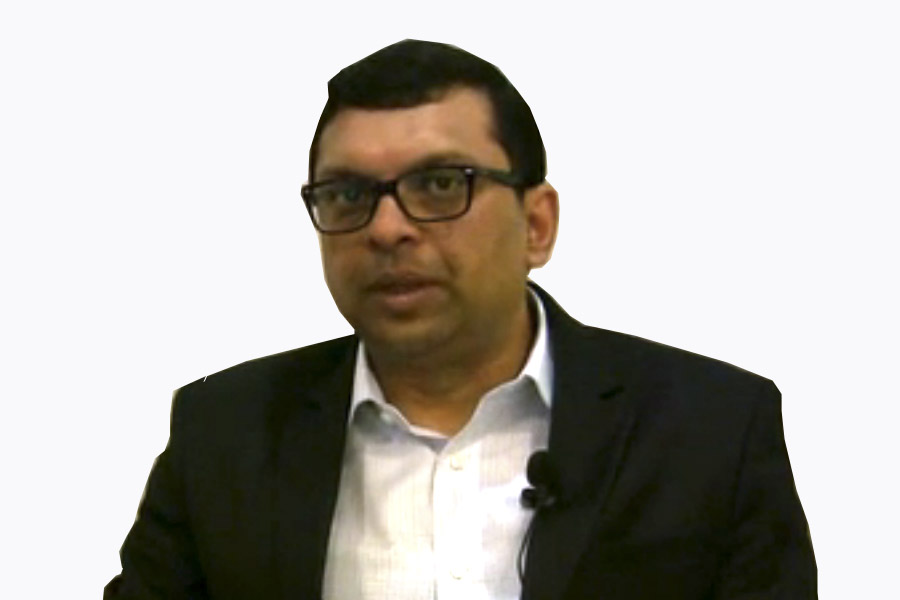
Experts throw light on why RBI held rate
The Reserve Bank of India surprised most of the D-Street players and economists alike by keeping the repo rate unchanged

Uncertainties on global and local front prod RBI into a wait and watch mode
By S Naren
In its fifth bi-monthly Monetary Policy, the Reserve Bank of India surprised most of the D-Street players and economists alike by keeping the repo rate unchanged at 6.25% along with its hawkish tone. However, the silver lining was the removal of the temporary incremental cash reserve ratio (CRR) announced on 26 November, 2016 with effect from December 10, 2016.
In its communication, the central bank has clearly indicated that the stance taken is with the objective of achieving consumer price index (CPI) inflation at 5% by Q4 of 2016-17 and the medium-term target of 4% within a band of +/- 2 per cent, while supporting growth. So, clearly RBI doesn’t want to react to the short term effects of demonetisation. As they said, “Turning to Q3, the Committee felt that the assessment is clouded by the still unfolding effects of the withdrawal of specified bank notes.”
The RBI currently seems to be in a wait and watch mode as there are multiple uncertainties playing out, both on the local and global front. At home, the system is coming to terms with the recent steps initiated by the Government while on the global front, political risks in UK and the Euro region, the possibility of a US Fed rate hike, increasing oil prices and the specter of financial market volatility.
However, we remain positive on the fixed income market in the near term and have recommended investors of long duration funds to stay invested. For new allocation we would recommend investors to consider accrual, short or dynamic duration funds.
Going forward, the policy momentum is likely to provide further fillip to infrastructure spending, fiscal consolidation, progress on GST roll out and corporate tax reforms which could provide tailwinds to the market. The confluence of all these factors could help equities generate reasonable returns in the medium to long term.
S Naren is the executive director and chief investment officer at ICICI Prudential AMC

A subtle signal or a leap of faith?
By Abheek Barua
Was the RBI simply insensitive to the problems of the real economy in staying pat on the policy rate or is there a subtle signal that it wanted to convey to the financial markets and the econonmy in general.
To answer this question one needs to appreciate the backdrop against which it was announced. On the domestic front, the full impact of demonetization on growth and inflation, and the relief from remonetization (the pace of cash replenishment) is yet to be gauged with any degree of accuracy. On the global front, the Trump presidency and political shifts in Europe could redefine both US fiscal and monetary policy and the structure of global trade. Emerging markets and their currencies including the rupee are bound to feel the impact of this. The global commodity cycle too seems to have turned with the supply cuts planned by the OPEC (pushing oil prices up), and because of the expectation of a large fiscal stimulus in the US driving a base metal rally. Thus if there was key theme that underpinned the RBI’s decision process, it was ‘uncertainty’.
The central bank faced another risk in its choice of the policy rate level It is possible that a rate cut could have strengthened apprehensions of a sharp slowdown in the economy. Thus instead of explicitly acknowledging a marked slowdown, the RBI chose to play growth concerns down by keeping the policy rate on hold. The RBI’s bet at this stage seems to be to convince the market that growth pain is transitory while there is enough demand in the system to make it fret over inflation risks. This strategy is certainly unconventional if not bold but whether it works is the key question.
Though the RBI governor was quick to deny it the impending rate decision by the Fed has influenced today’s policy also played a role put the RBI in a ‘wait-and-watch’ mode. The argument that the expectations of a rate hike are all baked into asset prices might seem convincing all fine but the actual unfolding of a major event like the Fed policy has been known to rock markets. Moreover, it is not just the rate hike in December but Fed’s guidance for 2017 which could keep the markets guessing in the near-term. Thus going by the textbook, keeping rates unchanged was perhaps the optimal course of action.
But has the RBI got its numbers right? In our view, the downward revision in growth projections was rather modest. We see the prospect of the GVA forecast being revised lower early next year. Thus if as we believe there were to be a sharper moderation in economic growth in 2H-FY17 making a strong case for a rate cut.
On the inflation front, the RBI highlighted the upside risk on account of rising oil prices. Overall, the RBI said that headline inflation is projected at 5% in Q4 of 2016-17 with risks still tilted to the 'upside'. While we agree that the deflationary impact of demonetization is likely to be modest, the upside risk on account of oil and other factors might not be as severe as the RBI seems to have factored in its policy calculations.
Thus we believe that internal growth-inflation dynamics are favourable for a couple of more cuts over the next few months. But could the cuts be more aggressive? As the RBI said in its policy statement, the imminent tightening of monetary policy in the US is triggering bouts of high volatility in financial markets, with the possibility of large spill-over that could have macroeconomic implications for emerging markets. India cannot afford to delink its interest rate trajectory completely from the US without risking capital outflows. We also cannot ignore the fact that the global commodity price outlook is far less benign than the last couple of years and some caution from the central bank is warranted. These factors mean that too many more rate cuts might not be in the offing over the medium term.
Abheek Barua is the Chief Economist with HDFC Bank
Post Your Comment














